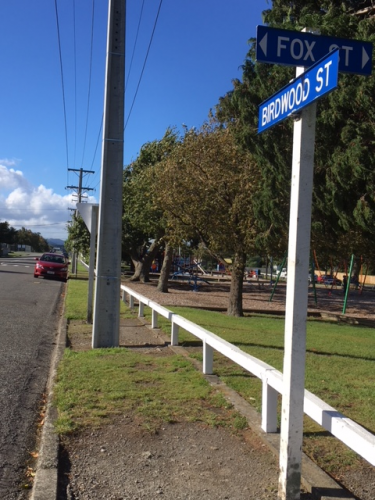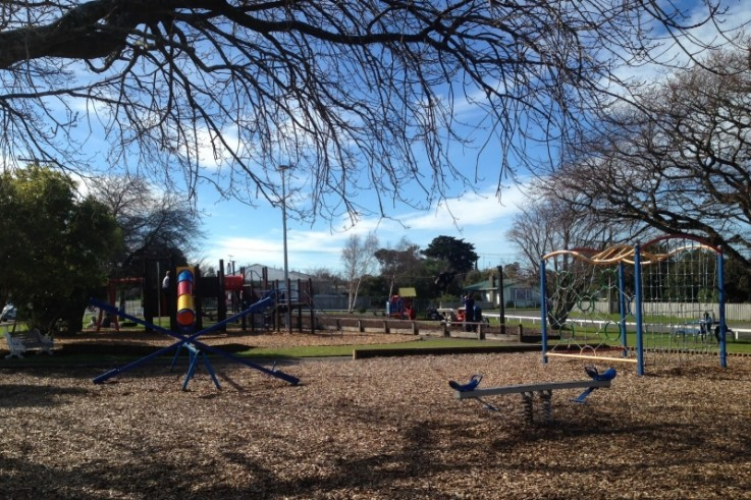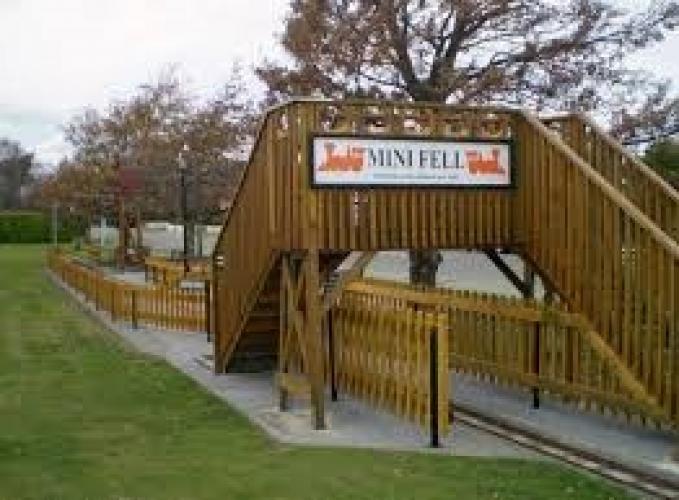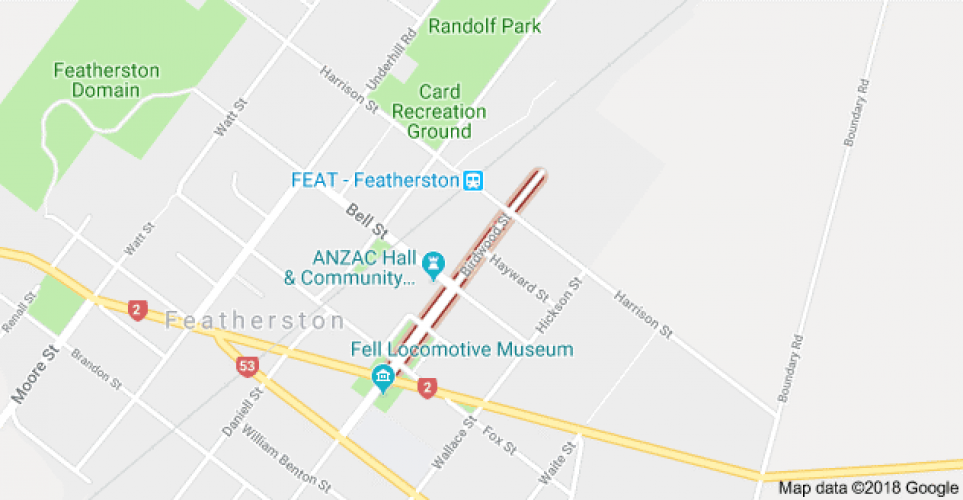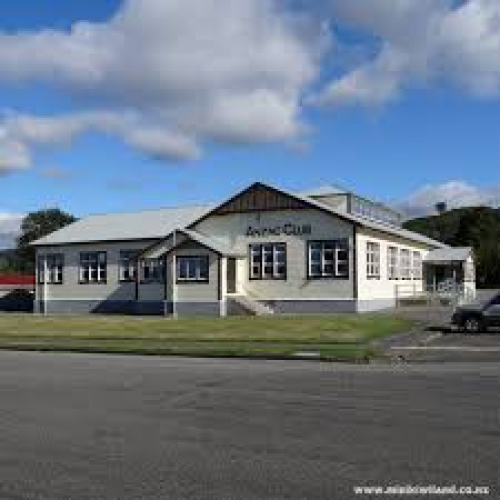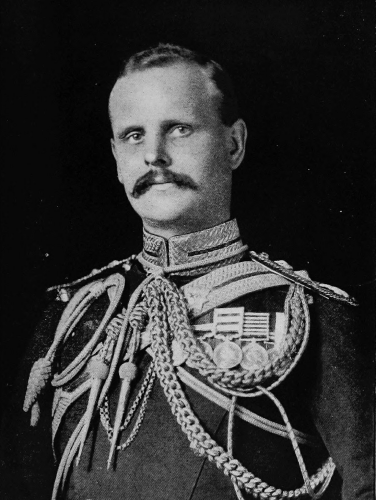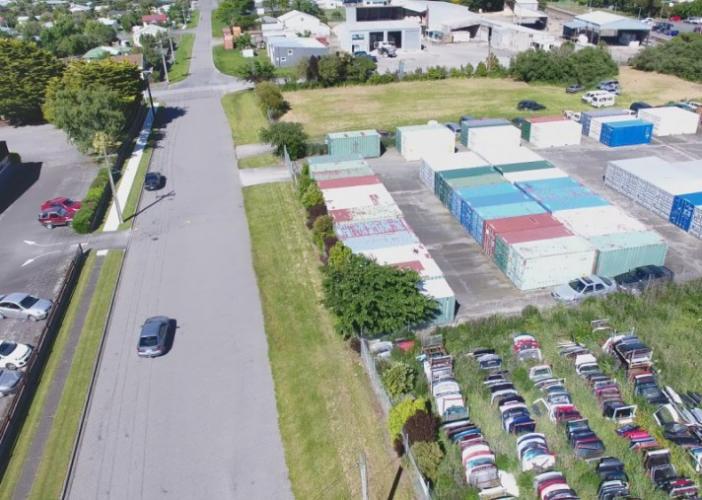107 Birdwood St Featherston, Park scene 2017
Reason for the name
This street in Featherston was named in Honour of Field Marshall William Riddell Birdwood, 1st Baron Birdwood, GCB, GCSI, GCMG, GCVO, CIE, DSO
Birdwood Street is important to our community as it has the following places on it: The Assembly of God Church, one access to St Teresa’s School, the Kiwi Hall, the park, the Mini Fell Trains and the skatepark.
Birdwood Street was originally named Schultze Street after Charles Schultze, a Scotsman who lived in Wellington where he operated a flourmill and served on the provincial council.
In World War One a lot of people in New Zealand were not happy about German place names and businesses so Archie Holmes wrote to the Featherston Town Board asking that the German sounding name Schultze Street be changed.
This article from the Wairarapa Times Age 16 December 1916 explains how the name was changed:
At the meeting of the Featherston Town Board on Wednesday, Com. A. C. Holms moved, and Com. B. S. Yelverton seconded, "That the name of Schultz street be changed to Somme street." Coms. Holms, Yelverton and Davis strongly supported the change, but Coms. Card, Tait and Benton were equally firm in contending that the name should remain as at present. Com. Donald, after hearing the arguments advanced for and against the motion, posed as an amendment the name "Rangatira" but this was not seconded. The name " Somme" not meeting with general favour, after a keen debate the motion was carried on the following form, "That the name Schultz street be changed," Com. Donald, after deliberation, joining the three advocates for a change. On the motion of Com. Card, seconded by Com. Holms, it was eventually resolved that the street be named "Birdwood."
There is no documented reason for why Birdwood was chosen. After the war General Birdwood became very popular with people due to the way that he treated his soldiers and for his relations with the ANZACs. He was normally seen in the front trenches talking with solders and he was very concerned with their welfare. Throughout the war he kept up a valuable correspondence not only with the governor-general, the prime minister and the minister for defence but also with bereaved or anxious families in Australia. During the war he wrote to the Governor-General and Prime Minister but also to families of soldiers who had died or were missing.
This popularity has meant that there are lots of places in Australia and New Zealand that are named after him.
Authors: Zach Ratuki, Karter Lloyd, Awatea Parr, Peter O’Driscoll (St Teresa’s School students) Carrie Watson (Teacher)
Field Marshall William Riddell Birdwood, 1st Baron Birdwood, GCB, GCSI, GCMG, GCVO, CIE, DSO (13 September 1865 – 17 May 1951)
William Riddell Birdwood was born on 13 September 1865 in in Kirkee, India. He went to Clifton College in Bristol and then at the Royal Military College, Sandhurst, England.
He was posted to India, where he served in the North-West Frontier campaigns, then in the Boer War in South Africa. In 1908 he was awarded the Distinguished Service Order and promoted to Major-General in 1911.
GALLIPOLI CAMPAIGN
When World War I started, Lord Kitchener was Britain’s Minister for War. He sent Birdwood to form an army corps from the Australian and New Zealand troops who were training in Egypt before moving to the Western Front. In 1914 he formed the Australian and New Zealand Army Corps, from which the name ANZAC comes.
The ANZACs were sent to capture the Gallipoli Peninsula. They landed at Anzac Cove on Aprl 25 1915, now famous for all the things that went wrong with it. The ANZACs had to deal with high ridges, thick scrub and tougher resistance from the Turkish than they had expected. The ANZAC soldiers showed great courage, under Birdwood’s leadership, but they were not prepared, and were too inexperienced to overcome the obstacles in front of them.
Birdwood took command of the Australian Imperial Force in May 1915, while still commanding Allied troops on the ground at Gallipoli. In August 1915 he carried out a major attack on the Turks, called the Battle of Sari Bair, but this was unsuccessful in moving the Turks from the peninsula. Birdwood was the only commander who was opposed to abandoning Gallipoli and the evacuation, led by Birdwood, is recognised as the one outstanding success of the whole campaign. The evacuation took place in December 1915 and January 1916.
After Gallipoli, the Anzac Corps was split in two, with Birdwood directing operations in France in 1916 and 1917, when he was promoted to General.He stayed in command until he was replaced in May 1918 by an Australian commander, Lieutenant-General John Monash where he then took command of the British 5th Army.
By the end of the war, Birdwood had been knighted and made a baronet. In the Australian Military Forces, Birdwood was made a General in 1920 and a Field-Marshal in 1925. In 1920 he toured Australia and New Zealand with his wife.
In 1925, he was also made Commander-in-Chief of the Indian Army before retiring in 1930. He died in England in 1951, aged 85 and the Australian government still pays for the upkeep of his grave in Twickenham in South West London.


